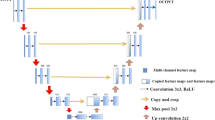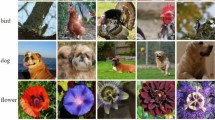Abstract
Digital communication often uses non-verbal ways to transmit important information. Such as; images, symbols, and different textures. At the time of the wavelet transform, a specific block of image (a small section) is used to hide the secret information. Due to this, the secret image size needs to be changed before the embedding process, and this process also affects the extracted image quality. This paper proposes a secure image steganography technique based on the discrete wavelet transform (DWT) and deep learning (DL) to improve the quality of the stego image and the extracted secret image. In the embedding process initially cover image is transformed into DWT coefficients, then embed the scrambled secret image following by singular value decomposition (SVD) and alpha blending operation. To get the stego image, the inverse discrete wavelet transform (IDWT) is applied. The secret image extraction process is the inverse of the embedding process, but due to the wavelet transform, a compressed secret image is extracted. This secret image resolution is increased using, DL-based very deep super-resolution (VDSR) neural network in post-processing. It converts the extracted image according to the size required by the receiver. The proposed VDSR method is evaluated on a publicly available dataset, the IAPR TC-12 Benchmark (dataset link is given before reference section). The proposed method has a 51.66 to 38.69 dB peak signal-to-noise ratio (PSNR) and a 0.99 structural similarity index (SSIM) for the various alpha values, which is shown in Section 3.3. According to obtained results, there is a 99.9% similarity between the SSIMs of the original and attacked stego images that makes the proposed technique robust. The observed range of SSIM is from 99.9% to 100%.




















Similar content being viewed by others
Data availability
The image data set IAPR TC-12 Benchmark [11] used to support the findings of this study is freely available at following datasets links (http://www-i6.informatik.rwth-aachen.de/imageclef/resources/iaprtc12.tgz).
Change history
27 April 2024
A Correction to this paper has been published: https://doi.org/10.1007/s11042-024-19005-1
References
Abdelwahab, AA, Hassaan, LA (2008) A discrete wavelet transform based technique for Image Data Hiding. In: 2008 National Radio Science Conference, pp. 1–9. IEEE, Egypt
Abdullah, HN, Yousif, SF, Valenzuela, AA (2016) Wavelet based image steganographic system using chaotic signals. In: 6th International Conference on Information Communication and Management (ICICM), pp. 130–135.IEEE, UK
Acharya UK, Kumar S (2021) Genetic algorithm-based adaptive histogram equalization (GAAHE) technique for medical image enhancement. Optik 230:166273
Arai K (2013) Method for data hiding based on Legall 5/3 (Cohen-Daubechies-Feauveau: CDF 5/3) wavelet with data compression and random scanning of secret imagery data. Int J Wavelets, Multiresol Inf Process 11(04):1360006
Arora, M, Khurana, M (2020) Secure Image Encryption Technique based on Jigsaw transform and chaotic scrambling using Digital Image Watermarking. Opt Quantum Electron, 52(2)
Bansal, M, Kumar, M, Sachdeva, M, Mittal, A (2021) Transfer learning for image classification using VGG19: Caltech-101 Image Data Set. J Ambient Intell Human Comput, 1–12
Coelho LP (2013) Mahotas: open source software for scriptable computer vision. J Open Res Softw 1(1):1–7
Dharwadkar N, Amberker BB (2010) Steganographic scheme for gray-level image using pixel neighborhood and LSB substitution. Int J Image Graph 10(4):589–607
Durafe A, Patidar V (2020) Development and analysis of IWT-SVD and DWT-SVD steganography using fractal cover. J King Saud Univ Comput Inf Sci 1(1):1–16
Garg, M, Ubhi, JS, Aggarwal, AK (2022) Neural style transfer for image steganography and destylization with supervised image to image translation. Multimed Tools Appl
Grubinger M, Clough P, Müller H, Deselaers T (2006) The IAPR TC-12 benchmark: a new evaluation resource for visual information systems. In: proceedings of the onto image 2006 language resources for content-based image retrieval. Genoa. Italy
Guo Y, Li BZ, Goel N (2017) Optimised blind image watermarking method based on firefly algorithm in DWT-QR transform domain. IET Image Process 11(6):406–415
Ho Y-A, Chan Y-K, Tsai C-S, Chu Y-P (2008) A BST-based robust image hiding method. Imaging Sci J 56(6):351–359
Hwang JJ, Jung Y-H, Cho B-H, Heo M-S (2020) Very deep super-resolution for efficient cone-beam computed tomographic image restoration. Imaging Scie Dentist 50(4):331–337
Islam MA, Hasnin M, Iftakhar N, Rahman MM (2021) Super resolution based underwater image enhancement by illumination adjustment and color correction with fusion technique. Adv Sci Technol Eng Syst J 6(2):36–42
Jia S, Zhou Q, Zhou H (2017) Novel color image watermarking scheme based on DWT and QR decomposition. J Appl Sci Eng 20:193–200
Kang Y, Liu F, Yang C, Luo X, Zhang T (2019) Color image steganalysis based on residuals of channel differences. Comput Mater Continua 59(1):15–329
Kaur G, Singh N, Kumar M (2022) Image forgery techniques: a review. Artif Intell Rev 56(2):1–49
Khalifa A, Guzman A (2022) Imperceptible image steganography using symmetry-adapted deep learning techniques. Symmetry 14(7):1–14
Khandelwal J, Kumar Sharma V, Singh D, Zaguia A (2022) DWT-SVD based image steganography using threshold value encryption method. Comput Mater Continua 72(2):3299–3312
Kumar V, Kumar D (2019) Performance evaluation of modified color image steganography using discrete wavelet transform. J Intell Syst 28(5):749–758
Kwan C, Chou B, Bell J III (2019) Comparison of deep learning and conventional demosaicing algorithms for Mastcam images. Electron 8(3):1–21
Lavanya B, Kumar MK (2017) Comparative analysis of image scrambling sequence generation method with Arnold. 2017 international conference of electronics. Commun Aerospace Technol (ICECA)
Mittal A, Soundararajan R, Bovik AC (2013) Making a completely blind image quality analyzer. IEEE Signal Process Lett 20(3):209–212
Modak PM, Pawar VK (2015) A comprehensive survey on image scrambling techniques. Int J Sci Res (IJSR) 4(12):813–818
Mondal, B (2018) Cryptographic image scrambling techniques. Cryptograph Inf Secur, 37–65
Mondal, B, Biswas, N, Mandal, T (2017) A comparative study on cryptographic image scrambling. Proceedings of the Second International Conference on Research in Intelligent and Computing in Engineering
Nazir H, Bajwa IS, Samiullah M, Anwar W, Moosa M (2021) Robust secure color image watermarking using 4D hyperchaotic system, DWT, HBD, and SVD based on improved FOA algorithm. Secur Commun Netw 2021:1–17
Shaheed K, Mao A, Qureshi I, Kumar M, Hussain S, Ullah I, Zhang X (2022) DS-CNN: a pre-trained XCEPTION model based on depth-wise separable convolutional neural network for finger vein recognition. Expert Syst Appl 191:116288
Shaheed K, Mao A, Qureshi I, Kumar M, Hussain S, Zhang X (2022) Recent advancements in finger vein recognition technology: methodology, challenges and opportunities. Inf Fus 79:84–109
Shaheed K, Mao A, Qureshi I, Abbas Q, Kumar M, Zhang X (2022) Finger-vein presentation attack detection using depthwise separable convolution neural network. Expert Syst Appl 198:116786
Shahi D, Kumar R, Reshma VK (2021) High-capacity reversible steganography on CMY and HSI color images using image interpolation. Webology 18(4):133–148
Sharma VK, Srivastava DK, Mathur P (2018) Efficient image steganography using graph signal processing. IET Image Process 12(6):1065–1071
Shejul AA, Kulkarni UL (2010) A DWT based approach for steganography using biometrics. In: International Conference on Data Storage and Data Engineering, pp. 39–43. IEEE, India
Thanki R, Borra S (2018) A color image steganography in hybrid FRT–DWT domain. J Inf Secur Appl 40:92–102
Ubhi JS, Aggarwal AK (2022) Neural style transfer for image within images and conditional GANs for destylization. J Vis Commun Image Represent 85:103483
Vaishnavi D, Subashini TS (2015) Robust and invisible image watermarking in RGB color space using SVD. Proced Comput Sci 46:1770–1777
Walia S, Kumar K, Kumar M, Gao X-Z (2021) Fusion of handcrafted and deep features for forgery detection in digital images. IEEE Access 9:99742–99755
Wang M-S, Chen W-C (2009) A hybrid DWT-SVD copyright protection scheme based on K-means clustering and visual cryptography. Comput Standards Interface 31(4):757–762
Wang R-Z, Lin C-F, Lin J-C (2001) Image hiding by optimal LSB substitution and genetic algorithm. Pattern Recogn 34(3):671–683
Wang C, Wang X, Xia Z, Zhang C (2019) Ternary radial harmonic Fourier moments based robust stereo image zero-watermarking algorithm. Inf Sci 470(1):109–120
Wang C, Wang X, Xia Z, Ma B, Shi Y-Q (2020) Image description with polar harmonic Fourier moments. IEEE Trans Circ Syst Vid Technol 30(12):4440–4452
Wu L, Zhang X, Chen H, Wang D, Deng J (2021) VP-NIQE: an opinion-unaware visual perception natural image quality evaluator. Neurocomputing 463(1):17–28
Xiong L, Zhong X, Yang C-N, Han X (2021) Transform domain-based invertible and lossless secret image sharing with authentication. IEEE Trans Inf Forensic Secur 16:2912–2925
Yasin DA, Shehab MN, Sabha DM, Yasin M (2021) An enhanced steganographic model based on DWT combined with encryption and error correction techniques. Int J Adv Comput Sci Appl 6(12):49–55
Author information
Authors and Affiliations
Corresponding author
Ethics declarations
Conflict of interest
The authors declare that they have no conflicts of interest to report regarding the present study.
Additional information
Publisher’s note
Springer Nature remains neutral with regard to jurisdictional claims in published maps and institutional affiliations.
The original online version of this article was revised: The original publication of this article contains the following errors: (1) In the first paragraph of the introduction section, the reference citation [13] needs to be replaced with [19]. (2) In Section 1.1 ( Contribution), the reference citation [11] needs to be replaced with [14]. (3) In section 3.2 (Invisibility of the proposed method ), first paragraph, reference citations [12] and [16] need to interchange positions. (4) In section 3.2 (Invisibility of the proposed method), third paragraph, the reference citation [13] needs to be added with [17]. (5) On section 3.2, page no. 42164, first sentence of the last paragraph. The equation (3) citation needs to be replaced with (11)
Rights and permissions
Springer Nature or its licensor (e.g. a society or other partner) holds exclusive rights to this article under a publishing agreement with the author(s) or other rightsholder(s); author self-archiving of the accepted manuscript version of this article is solely governed by the terms of such publishing agreement and applicable law.
About this article
Cite this article
Khandelwal, J., Sharma, V.K. W-VDSR: wavelet-based secure image transmission using machine learning VDSR neural network. Multimed Tools Appl 82, 42147–42172 (2023). https://doi.org/10.1007/s11042-023-15166-7
Received:
Revised:
Accepted:
Published:
Issue Date:
DOI: https://doi.org/10.1007/s11042-023-15166-7




